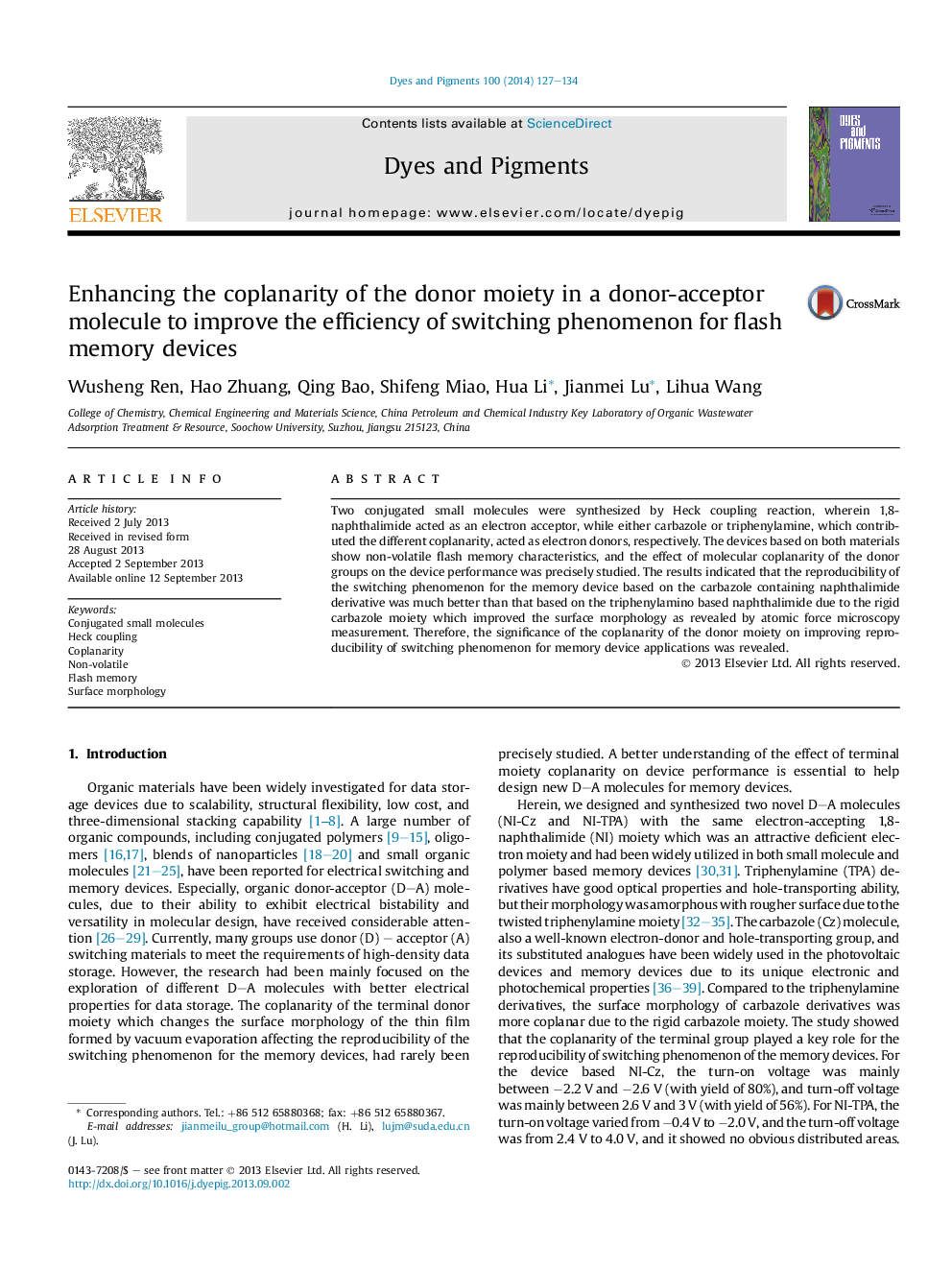| Article ID | Journal | Published Year | Pages | File Type |
|---|---|---|---|---|
| 176311 | Dyes and Pigments | 2014 | 8 Pages |
•Two D–A naphthalimide systems were designed, synthesized and applied in the memory devices.•The two molecules with varied molecular coplanarity had different photoelectric properties.•The molecule with a more coplanar carbazole moiety exhibited smooth surface morphology.•Both devices showed flash memory behavior.•The device based on the carbazole substituted naphthalimide had better probability and stability.
Two conjugated small molecules were synthesized by Heck coupling reaction, wherein 1,8-naphthalimide acted as an electron acceptor, while either carbazole or triphenylamine, which contributed the different coplanarity, acted as electron donors, respectively. The devices based on both materials show non-volatile flash memory characteristics, and the effect of molecular coplanarity of the donor groups on the device performance was precisely studied. The results indicated that the reproducibility of the switching phenomenon for the memory device based on the carbazole containing naphthalimide derivative was much better than that based on the triphenylamino based naphthalimide due to the rigid carbazole moiety which improved the surface morphology as revealed by atomic force microscopy measurement. Therefore, the significance of the coplanarity of the donor moiety on improving reproducibility of switching phenomenon for memory device applications was revealed.
Graphical abstractThe device based NI-Cz had better probability and stability due to its more coplanar carbazole moiety than that based NI‒TPA.Figure optionsDownload full-size imageDownload as PowerPoint slide
